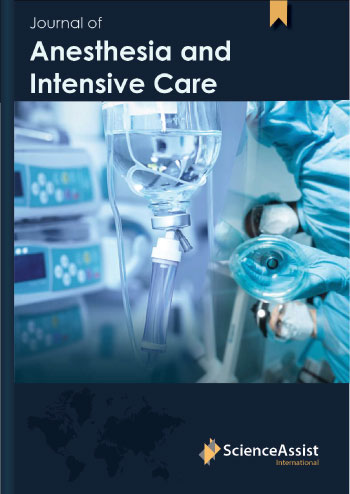
Volume 2, Issue 1 (2021)
Personal Protective Equipment (PPE)
They protect the patient and the health care personnel (HCP) from infecting each other. This also protects the HCP from becoming a vector. PPE guidelines ANSI/AAMI PB70:2012 are published by the American National Standards Institute (ANSI) and the Association for the Advancement of Medical Instrumentation (AAMI) [1].
Gowns and Gloves
There are four protection levels of gowns. Level 1 gowns provide only splash protection. Level 2 gowns provide splash protection and resistance to fluid under low pressure. Most surgical gowns are level 3, intended to provide protection against fluids under moderate pressure. The highest protection is provided by level 4 gowns, which provide protection against fluids and pathogens. Surgical gowns do not provide protection at the back of the gown, presumably because the surgeon is facing the patient. Isolation gowns differ by applying the standard to both the front and back of the gown. Level 4 isolation gowns protect front and back against fluids and pathogens
Face Mask
A mask blocks most of the splashes and droplets but provides inadequate protection against aerosol or airborne particles [5]. The diameter of SARS-CoV-2 is approximately 0.1 μm. It is transmitted by respiratory droplets larger than 5μm, airborne (aerosol) transmission less than 5μm, and by contact with fomites. Utilizing a mask decreases the inoculum. It leads to decreased incidence of infection as well as decreased severity of infection among those who are infected [6]
N95 Respirator N95
particulate filtering facepiece respirator (FFR)are recommended for anyone exposed to aerosol. N means it is not oil resistant, 95 means it filters 95% of 0.3μm particles. These respirators are made of nonwoven polypropylene or other synthetic plastic fibers. Electrostatic charge enhances filtration. For a fibrous filter, the most penetrating particle size is 0.3 μm. This respirator standard is called FFP-2 in the European Union. The performance of Chinese KN-95 respirators varies with the manufacturer
1. https://www.aami.org/docs/default-source/products_ store/standards/pb70_1206.pdf.
2. https://www.cdc.gov/coronavirus/2019-ncov/hcp/usingppe.html.
3. Lin Y, He Y, Li J. Personal Protective Equipment and Covid-19. N Engl J Med. 2020;383:e22.
4. Chu DK, Akl EA, Duda S, Solo K, Yaacoub S, Schünemann HJ, et al. Physical distancing, face masks, and eye protection to prevent person-to-person transmission of SARS-CoV-2 and COVID-19: a systematic review and meta-analysis. Lancet. 2020;395:P1973-1987.
5. Leung NHL, Chu DKW, Shiu EYC, Chan KH, McDevitt JJ, Hau BJP, et al. Respiratory virus shedding in exhaled breath and efficacy of face masks. Nat Med. 2020;26:676-680. 6. Gandhi M, Rutherford GW. Facial Masking for Covid-19- Potential for “Variolation” as We Await a Vaccine. N Engl J Med. 2020;383:e101. 7. Konda A, Prakash A, Moss GA, Schmoldt M, Grant GD, Guha S. Aerosol Filtration Efficiency of Common Fabrics Used in Respiratory Cloth Masks. ACS Nano. 2020;14:5;6339-6347. 8. Sickbert-Bennett EE, Samet JM, Clapp PW, Chen H, Berntsen J, Zeman KL, et al. Filtration Efficiency of Hospital Face Mask Alternatives Available for Use During the COVID-19 Pandemic. JAMA Intern Med. 2020; 11;e204221. 9. https://www.cdc.gov/niosh/topics/hcwcontrols/ recommendedguidanceextuse.html. Last accessed November 11, 2020
